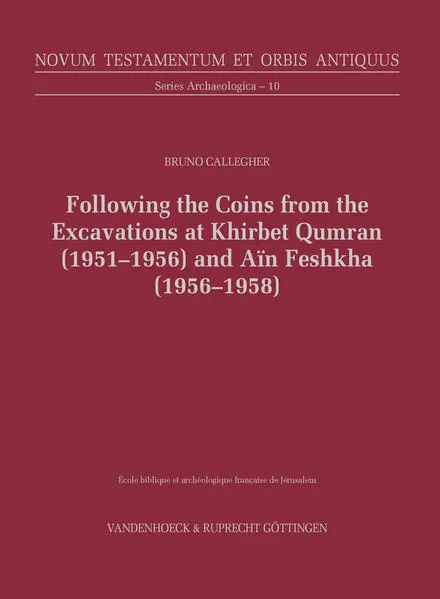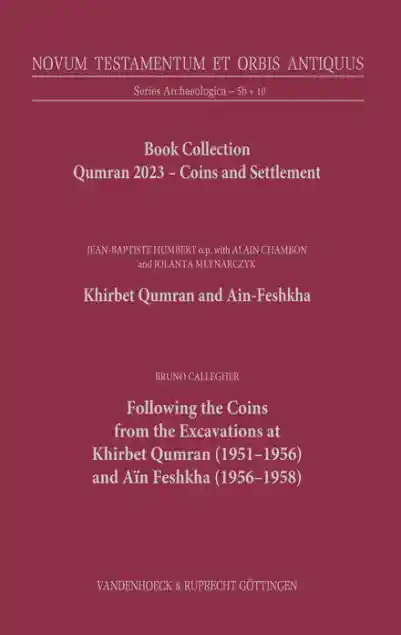Novum Testamentum et Orbis Antiquus, Series Archaeologica (NTOA.SA)
Following the Coins from the Excavations at Khirbet Qumran (1951–1956) and Aïn Feshkha (1956–1958)
Chronologie aller Bände (1 - 2)
Die Reihenfolge beginnt mit dem Buch "Following the Coins from the Excavations at Khirbet Qumran (1951–1956) and Aïn Feshkha (1956–1958)". Wer alle Bücher der Reihe nach lesen möchte, sollte mit diesem Band von Bruno Callegher beginnen. Der zweite Teil der Reihe "Buchpaket Qumran 2023 – Coins and Settlement" ist am 15.04.2024 erschienen. Die Reihe umfasst derzeit 2 Bände. Der neueste Band trägt den Titel "Buchpaket Qumran 2023 – Coins and Settlement".
- Anzahl der Bewertungen für die gesamte Reihe: 0
- Ø Bewertung der Reihe: 0
- Autor: Callegher, Bruno
- Anzahl Bewertungen: 0
- Ø Bewertung:
- Medium: Buch
- Veröffentlicht: 13.11.2023
- Genre: Sonstiges
Following the Coins from the Excavations at Khirbet Qumran (1951–1956) and Aïn Feshkha (1956–1958)
The Qumran coins (hoard and single finds) are worthy of a novel. They were perfectly examined by H. Seyrig and A. Spijkerman, then the popular conviction spread that the coins had been lost. In fact, they were always kept where they had been classified. Now they are finally published and provide the possibility to suggest that Qumran was a very open centre for trade and transactions, at least from finally the end of the second century BC until the destruction of the site in 70/72 CE.
This documentation provides a new reasoning on effective data – not on assumptions.
This documentation provides a new reasoning on effective data – not on assumptions.
- Autor: Callegher, Bruno
- Anzahl Bewertungen: 0
- Ø Bewertung:
- Medium: Buch
- Veröffentlicht: 15.04.2024
- Genre: Politik
Buchpaket Qumran 2023 – Coins and Settlement
Khirbet Qumran and Ain-Feshkha III A:
For 60 years Qumran research has been focused on epigraphy, exegesis, and the historical sources of the Dead Sea Scrolls. Now the time has come to provide researchers with a complete documentation.
Following the Coins from the Excavations at Khirbet Qumran (1951–1956) and Aïn Feshkha (1956–1958):
The Qumran coins are worthy of a novel. Now they are finally published and provide the possibility to suggest that Qumran was a very open centre for trade and transactions, at least from finally the end of the second century BC until the destruction of the site in 70/72 CE.
This documentation provides a new reasoning on effective data – not on assumptions.
For 60 years Qumran research has been focused on epigraphy, exegesis, and the historical sources of the Dead Sea Scrolls. Now the time has come to provide researchers with a complete documentation.
Following the Coins from the Excavations at Khirbet Qumran (1951–1956) and Aïn Feshkha (1956–1958):
The Qumran coins are worthy of a novel. Now they are finally published and provide the possibility to suggest that Qumran was a very open centre for trade and transactions, at least from finally the end of the second century BC until the destruction of the site in 70/72 CE.
This documentation provides a new reasoning on effective data – not on assumptions.

